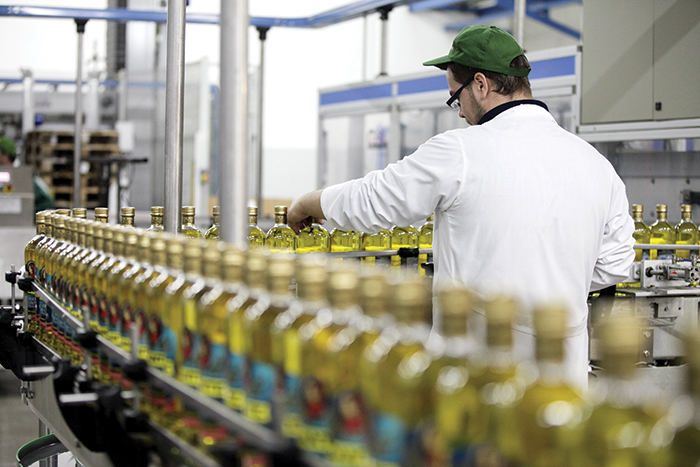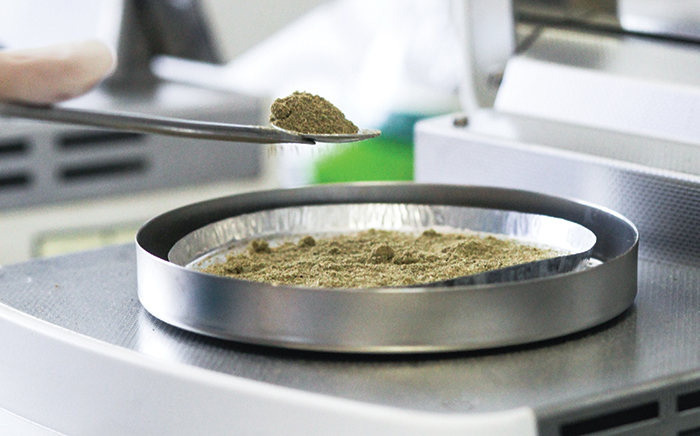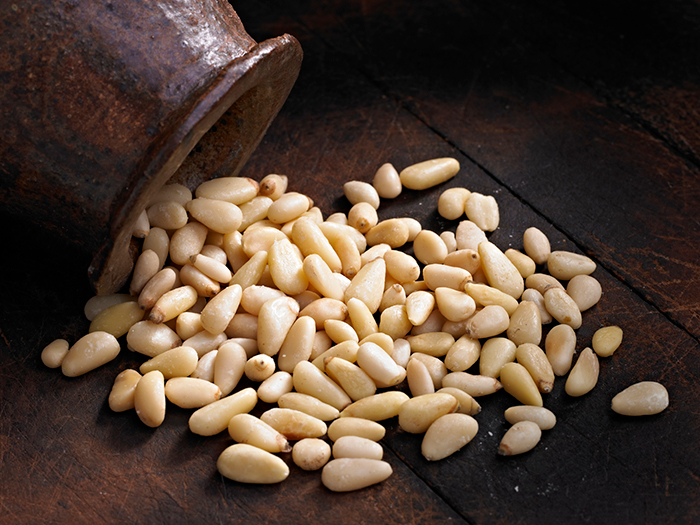
Outsmarting Food System Fraudsters
Supply chain disruptions coupled with inflation and commodity shortages are creating new opportunities for food adulteration. Here’s a look at strategies and tactics for fighting back.
Article Content
Booths is the oldest family-owned supermarket chain in the United Kingdom, with nearly two centuries of proudly featuring domestically raised meat. But its reputation took a hit early this year when the grocery retailer said it had been linked to an investigation into beef improperly labeled as British.
The National Food Crime Unit of the UK’s Food Standards Agency is investigating the supplier of the beef products. “Booths acted instantly” upon being made aware of the potential fraud two years ago, the chain said in March, leaving it “absolutely confident in its British-only meat commitment. Issues of provenance, traceability, honesty, and authenticity are of the highest importance.”
The fraud attempt hardly could be considered a surprise. “Meat is an expensive commodity, and therefore it is among the leading food fraud categories,” says Tracy Fink, director of scientific programs and science and policy initiatives for the Institute of Food Technologists. “So a primary motivator is the potential economic gain, and the highly opportunistic nature of food fraud makes it difficult to predict and prevent.”
Indeed, food adulteration and fraud are as old as agriculture—and as new as the latest lab-bench techniques for compound masking. Greed, of course, is primeval. So even modern-age factory processing and ingredient tracking technologies haven’t stopped criminals around the world from victimizing the global food system, robbing legitimate players of revenues, harming the reputations of brands and entire commodities, degrading nutrition and the food consumption experience, and, in the worst cases, sickening and even killing innocent humans and pets.
Think of adulteration and fraud as the malicious part of a food danger spectrum that also includes inadvertent safety problems such as last year’s bacteria-borne debacle in baby formula and the 2018 E. coli outbreak in romaine lettuce supplies.
The toll of deliberate misrepresentation of foods and ingredients is immense and apparently getting larger: Food fraud affects about 1% of the global food industry, with a cost of at least $10 billion to $15 billion a year, according to the U.S. Food and Drug Administration (FDA), with a recent estimate by FMI, The Food Industry Association, putting the economic damages as high as $40 billion a year.
Opportunistic Offenders
“When there are pressures globally on specific food ingredients or classes, there are opportunities for less-than-level folks to come in and offer what appears to be the same products but may not be, or a lower grade passed off as a premium product,” says Tim Lombardo, senior director for food consulting services for EAS Consulting.
In fact, experts portray a new “perfect storm” of opportunity for fraudsters because of the supply chain disruptions caused by the pandemic, record-high recent inflation rates, and new commodity shortages created by factors ranging from war to weather disasters. The European Food Safety Authority estimates that food fraud incidents rose by about 30% during the COVID-19 pandemic, for example. And one of the latest scams involves sunflower oil that suddenly became in short supply because Ukraine is its biggest exporter. Historically, adulteration of sunflower oil has involved cutting it with castor oil and paraffin oil, but experts say it’s important to be on the lookout for new scams.
At the same time, the food industry, its partners, and regulators are throwing more and better resources at the problem than ever before, summoning new rigor in constructing and monitoring supply chains, displaying more determination to track down and prosecute malign players, and fielding a host of new technologies.
The practice is ancient, going back to brokers who put water at the bottom of olive oil amphora in the Middle East. In India, paddy workers would mix in white gravel with rice and slip papaya seeds in with pepper, says Kantha Shelke, founder and principal of Corvus Blue, a food science research and consulting firm, who witnessed such practices on her grandparents’ farm as a young girl.
A cluster of shocking cases about 15 years ago kicked off new alarm in the United States, including Australian exportation of horse and kangaroo meat to sell as beef in North America and the tainting of infant formula and pet food with melamine. Chinese manufacturers were adding the synthetic chemical—which has a high nitrogen content and is often used in plastics—to make it appear that their products were packed with protein. This led to kidney failure, more than 300,000 illnesses, and at least six deaths of babies, according to news reports, along with the deaths of scores of dogs and cats.
Today, the list of usual suspects for fraud includes olive oil, honey, wine, vanilla extract, and spices. “Each of those products are at higher risk from an inherent perspective because of what manufacturers can substitute or dilute,” says Dan Banes, global head of commercial markets for Exiger, a risk manager for supply chains. “And they’re at higher price points, so there are economic opportunities to dilute with something cheaper and still sell at a higher price.”
Fish is another primary target, including fake red snapper, salmon marketed as “wild caught” when it wasn’t, and shrimp mixed with some kind of organic gel. Tilapia from export farms that “are constantly trying to duck around FDA regulations and inspection,” is also an issue, according to Kevin Beasley, chief information officer for Vormittag Associates, a technology provider for food distributors.
Evolving food preferences create new opportunities for fraud, such as the boom in organic ingredients, which typically taste and behave the same as their conventional counterparts but whose provenance can be misrepresented. The current push for “free from” and plant-based foods opens doors as well. “This comes from growing demand by irrationally naive consumers believing certain things are somehow better or safer for you, such as clean label ingredients and gluten-free foods,” Shelke says.
Consumers tend not to forget claims of foul play in their food. Companies importing olive oil into the United States are still paying a steep price for a report on 60 Minutes in 2016 that depicted their product—but not oil from California olives—as rife with adulteration and, especially, substitution of lower-grade oils for the premium “extra virgin” variety.
“It was basically a hit job,” asserts Joseph Profaci, executive director of the North American Olive Oil Association. “They targeted imported olive oils and tested them for adulteration and then did taste tests. They didn’t find any adulteration. And over two years they tested maybe 70 bottles. But the Internet lit up and stayed lit up for a decade.” More recent reports have continued to assert continued widespread problems of outright substitution of olive oil with other substances as well as grade fraud.
In any event, olive oil importers’ sales flatlined in the wake of the 60 Minutes controversy after they had risen steadily for many years as more Americans embraced the heart healthiness of olive oil and the Mediterranean diet. Sales recovered only somewhat during the last few years with the cook-at-home craze brought on by the pandemic.
“We still really spend a lot of time and resources to combat that perception” of adulteration, “and we have to explain what we do as a company and a leader in the category,” says Mouna Aissaoui, executive vice president and chief operating officer of Pompeian, a leading brand of olive oil imported into the United States.
How It Happens
So who are the bad actors who actually adulterate food? Most are what the industry calls “economically motivated” fraudsters just looking to make money. They range from lone wolves to highly sophisticated, centrally controlled, organized crime operations and encompass opportunistic farmers, slimy brokers, and crooked manufacturers.
“There’s a wide range, including companies themselves, and underdeveloped countries where governments don’t have strong regulations,” says Heena Patel, director of food safety consulting and technical services for food testing company SCS Consulting Services. “There are also some people who don’t even know and think it might be OK to do this kind of stuff.”
The smaller the company is, the more likely it can be victimized by fraud because it typically won’t have as much oversight. And, perhaps surprisingly, the practice is “less extensive with private labels because retailers do their own audits and usually require suppliers to be certified” by the Global Food Safety Initiative (GFSI), an industry coalition, says Jim Wisner, founder of Wisner Marketing.
Indeed, maintains Shelke, “Some big [brands] know this is happening but are choosing to look away because it’s in their favor anyway.” For instance, says Shelke, some users of cocoa powder “know what they’re using has other starches in it.” Meanwhile, she says, “there are chemists in China that are systematically adding other ingredients to prevent detection” of adulterants.
A few evil agents are actually trying to hurt people. “Someone may be disgruntled or is trying to make a statement and happens to be working at a food manufacturer,” Shelke says.
COVID-era supply disruptions, the war in Ukraine, unusual droughts, and flooding all have jangled the supply chain recently, forcing companies to execute contingent sourcing that made maintaining ingredient integrity more difficult. More recently, high inflation has caused shifts in consumer demand that have forced companies to adjust their sourcing further. “Americans are used to paying very little for food, unlike other countries,” Shelke notes.
Taking Action
But amid greater incidence of attempts to adulterate food, the industry and governments also are fighting back in these ways:
Tightening supplier compliance. This is “one of the most important actions companies must take to mitigate the risk of food fraud,” says Hilary Thesmar, chief science officer and senior vice president, food safety, for FMI, noting that it’s “critical to assuring food and ingredients are purchased and received from a trusted source that is an approved supplier.”
Companies that have “solid supplier management and quality programs, that are doing their due diligence to vet suppliers, will catch these things before they get into supply chains,” says Deneen Rief, president of Jade Food Consulting.
Even some major companies remain vulnerable in “sub-tier supplier visibility,” Banes says. “They don’t have the visibility to get to the hole in the ground to where the ingredients are actually coming from, so they can’t put on enough pressure to meet standards.”
Third-party verification and annual recertification are considered vital. “Regardless of your past history with a supplier,” Banes says, “you should be going on-site to see them, both domestic and internationally, or be working with a qualified individual who does on-site visits who has experience with that community.”
Combing for information. More data is continually becoming available. The FDA, for instance, tracks and posts information on fraud and adulteration on its website and issues important alerts. The International Food Safety Authorities Network provides an important platform for the rapid exchange of information during food safety emergencies and for sharing routine information.
Meanwhile, database analysis and artificial intelligence (AI) are helping companies monitor their supply universes.
“If there’s material change in a network, we highlight that for companies, whether it’s financial health, ESG, or reputational, in addition to fraud and adulteration, of course,” says Banes of Exiger.
Relying on regulators and standards. An era of heightened concern about food safety, which involved terrorism fears after 9/11 and a spate of incidents in the early 2000s, led the FDA to come forth with new regulations that ultimately resulted in the Food Safety Modernization Act (FSMA) of 2011. The new law overhauled food production regulations and gave the agency more authority to oversee and enforce supply chains to prevent foodborne illnesses.
“That single act [also] gave the FDA authority to seek legal ramifications for [adulteration and fraud], which it didn’t have before,” Fink says. “The owner of the company now is responsible along with quality and safety personnel.”
FSMA helped establish regulatory requirements for food supply chains in areas including intentional adulteration, preventive controls, produce safety, and foreign supplier verification. Annual audits by a GFSI-approved program are “imperative,” Thesmar says. “As part of achieving GSFI certification, food companies are required to do vulnerability assessments of food fraud and create a mitigation plan for food fraud prevention.”
FMI and the FDA also recommend companies have a “food defense plan” to evaluate their vulnerability to fraud, including susceptibility to raw material or ingredient substitution, finished product mislabeling, dilution, or counterfeiting. At the same time, Thesmar says, companies should develop and implement a mitigation plan that specifies how identified vulnerabilities are to be controlled, including where the vulnerabilities are in supplier approval, site security, employee training, purchasing, receiving, storage, and label control.
“It can be as simple as keeping the doors locked,” Rief says. “Any time there is an entry point in the process—for example, where you have to open the lid of a kettle—make sure it’s locked and the key is kept by only a certain number of vetted people, so you mitigate the risk of someone intentionally adding a harmful substance.”
Sourcing closer. Food companies’ moves to shorten and simplify supply chains with closer-in suppliers, especially “onshoring” international sources, make sense for a bunch of reasons, including fraud prevention. “Supply chains have become less complex, perhaps, with more domestic and local sourcing and more manufacturers and retailers relying more on relationships as key drivers for maintaining costs and product quality and no disruptions,” says Waylon Sharp, vice president, commercial operations, Bureau Veritas North America, a testing, inspection, and certification service.
But “farm to table” and like efforts aren’t always possible, of course. And, in addition, as Thesmar notes, “sourcing products locally doesn’t mitigate risk, and companies must take the same steps for approving suppliers” and evaluating risks whether the supplier is next door or halfway around the world.
Enlisting new technologies. Technology options for ensuring product integrity include the following:
• Blockchain. Attaching immutability to data at each step along the supply chain is of obvious interest to those trying to defeat food fraud and adulteration. Walmart kicked off much of the effort by launching a blockchain partnership in 2017 with big names such as Dole, Kroger, McCormick, Nestlé, Tyson Foods, and Unilever.
Food safety and traceability are at the apex of needs that blockchain is addressing in the industry, but the burgeoning technology is of great utility in mitigating fraud as well.
• Artificial Intelligence. It’s coming to the fore in more ways than data analysis. For example, says Banes, Exiger harnesses AI “so that instead of having humans review all of the information and pick and choose which pieces are important, you can have AI do that for you so that you can immediately focus on the highest risks and [on] mitigating controls.”
• Bench Advancements. Advanced techniques that the industry didn’t have several years ago are pushing their way into utilization, says Patel of SCS Consulting, including the latest in chromatography, spectroscopy, stable-isotope techniques, and DNA sequencing.
For example, Savormetrics harnesses spectral analysis technology and sensors to identify content of produce and prepared foods by passing over items with a cell phone. “So if a fraudster knows someone will be using this to detect what percentage of starch is added,” Shelke explains, “they’ll be less likely to adulterate it.”
Purity-IQ is another technology startup, one aimed explicitly at preventing food fraud. Cofounder Deleo de Leonardis once was in charge of private label for Sobeys, a Canadaian grocery chain, and has developed a way to harness nuclear magnetic resonance technology.
“It looks at the makeup of a product on a molecular level, exposes everything in the product,” she says. “It’s non-targeted versus targeted, giving you a complete picture of all the compounds in a product. With targeted searches, you need to know up front what you’re looking for. It’s inefficient. You have to be looking several times.”
• Food Fraud Databases. For example, a database known as Decernis, now FoodChain ID, is a searchable and curated database of food fraud records to support GFSI-required vulnerability assessments for animal food and human food, including beverages and animal feedstuffs.
But even as preventive technology advances, notes Lombardo of EAS, fraudsters “are becoming more and more sophisticated too. As we come up with ways to detect and test and make those determinations, the bad actors are finding ways to go around that.”
Schemes and Scams
Food fraud and adulteration is a constant problem for the industry, but the practice—and its impacts —have been punctuated by some nefariously noteworthy big scams. The following are among them, according to Mashed.com and other sources:
Horsemeat. Forty years ago, “Slaughtergate” involved Australian export of packages of meat from both horses and kangaroos that were labeled as beef and shipped out to the United States. Among other things, the scandal eventually led to a huge overhaul of Australia’s export bureaucracy and laws.
Maple Syrup. Ringleaders of “the Great Canada maple-syrup heist” covertly siphoned syrup from thousands of white metal barrels in warehouses rented by the Federation of Quebec Maple Syrup Producers, knowing that they were inspected only once a year. They replaced the syrup with water and transported the illicit syrup for packaging into products mostly exported to America.
Pine Nuts. From 2008 to 2012, some consumers reported a bitter metallic taste that could last for weeks after they ate pine nuts. An international investigation showed that some companies were substituting a non-food species of pine nuts for more expensive edible species.
Crab. Capt. Neill’s Seafood saw its owner, Phillip Carawan, plead guilty in 2019 to selling nearly 180,000 pounds of mislabeled crab meat—which the company had purchased abroad and then labeled “Product of the USA”—to wholesale clubs between 2012 and 2015.
Organic Grain. Missouri farmer Randy Constant fraudulently sold at least $142 million in grain as though it was organic. He and three farmers from Nebraska who supplied him with non-organic grain were sentenced to federal prison in 2019.
Ensuring Honey’s Authenticity
Honey is a frequently adulterated product, but certification efforts attempt to mitigate the scope of the problem and ensure product quality. Learn more about efforts to prevent adulteration of honey in the digital exclusive article.

















